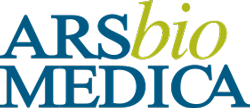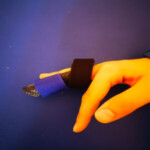At Arsbiomedica clinic, the rehabilitation service relies on various professional figures to provide patients with rehabilitative excellence in various physiotherapeutic fields. In our team, there are highly specialized professionals in hand and upper limb rehabilitation.
The hand is an extremely complex organ, not only for the motor activities it can perform but also for the sensory information that makes it the external projection of the human brain. Starting from this concept, it is essential to approach hand rehabilitation with an integrated team, including the hand surgeon, the physiotherapist specialized in hand rehabilitation, the occupational therapist, and, when necessary, the clinical psychologist.
Therefore, great importance is placed on recovering the patient’s daily activities to achieve a better level of autonomy and quality of life.
The hand physiotherapist plays an essential role in supporting the patient, in direct communication with the doctor or surgeon, and in creating personalized treatment, akin to a tailor-made coat, so that the patient can trust the therapy with tranquility and confidence. In hand rehabilitation, the therapist focuses on restoring the correct balance of the involved joints and, no less importantly, teaching the patient the fundamental principles of ergonomics, that is, respecting the structures to prevent the progression of symptoms.
The physiotherapist works on the patient’s symptoms without neglecting the principles of NEURODYNAMICS and GLOBALITY because often a symptom arising in one area of our body can cause referred symptoms elsewhere.
For example, excessive tension in the cervical spine can stress one of the nerves in the upper limb (median, ulnar, or radial), resulting in radiating pain in the thumb, wrist, or other areas.
Hence, it is important to incorporate hand treatment into the concept of GLOBALITY, working, when possible, with postural treatments to prevent the symptom from spreading and affecting other areas.
Splint
In the REHABILITATIVE TREATMENT OF THE HAND, SPLINTS and BRACES for immobilization or rest play a fundamental role. In our facility, we personally craft custom-made splints to ensure the patient’s maximum comfort. We create static or dynamic splints crafted by highly specialized personnel. The splint is made of a thermoplastic material, moldable in warm water, or neoprene material worked directly on the patient’s hand. It is then secured with Velcro to the immobilized area. The material is breathable and hypoallergenic and can be further modified later if the therapist deems it necessary.
The world of hand rehabilitation involves CONSERVATIVE REHABILITATION and POST-SURGICAL REHABILITATION.
Conservative Rehabilitation
CONSERVATIVE REHABILITATION is based on the possibility of addressing most degenerative and traumatic hand pathologies early on. However, for the treatment to be successful, it is essential to consult a hand specialist, either a doctor or a physiotherapist, in the early stages of symptom onset. Conservative treatment of many pathologies can also be offered to patients who, for various reasons, cannot undergo surgery.
CONSERVATIVE TREATMENT is based on:
- Joint mobilization (active, passive, or assisted) to restore physiological ranges of motion.
- Essential functional rehabilitation for the patient’s return to daily activities.
- Neurodynamics and global approach.
- Anti-inflammatory action (combined with the use of pain-relieving creams and physical therapies).
- Protective and rest splints.
Post-Surgical Rehabilitation
POST-SURGICAL REHABILITATION focuses on:
- Reduction of post-surgical symptoms.
- Edema treatment with manual lymphatic drainage techniques.
- Scar treatment with and without specific creams and dedicated maneuvers.
- Joint mobilization (active, passive, or assisted).
- Functional re-education.
- Immobilization or assisted mobilization splints.
- Sensitivity restoration using desensitization materials where necessary.
Our team dedicates specific attention to PERIPHERAL NERVE INJURIES; in these cases, the rehabilitation process is lengthy and complex.
In our facility, we employ various rehabilitation techniques to achieve the best possible outcome.
The hand physiotherapist, assisted by the NEUROCOGNITIVE physiotherapist, will:
- Maintain joint movement in the injured area and throughout the limb.
- Preserve nerve integrity.
- Protect the skin and treat scars.
- Counteract and contain hyperactivity of healthy function.
- Stimulate weak muscles.
- Facilitate learning of motor-sensory recovery.
- Re-educate sensitivity.
- Monitor reinnervation.
Common patologies:
The most common hand pathologies include:
- Carpal Tunnel Syndrome
- Trigger Finger or Trigger Thumb
- De Quervain’s Tenosynovitis
- Thumb Arthritis (Rizoartrosi)
- Dupuytren’s Contracture
- Ganglion Cyst or Tendon Cyst
- Tendon Injuries
Do you need a medical visit or an exam?
Choose the best care for yourself
Choose the best care for yourself











